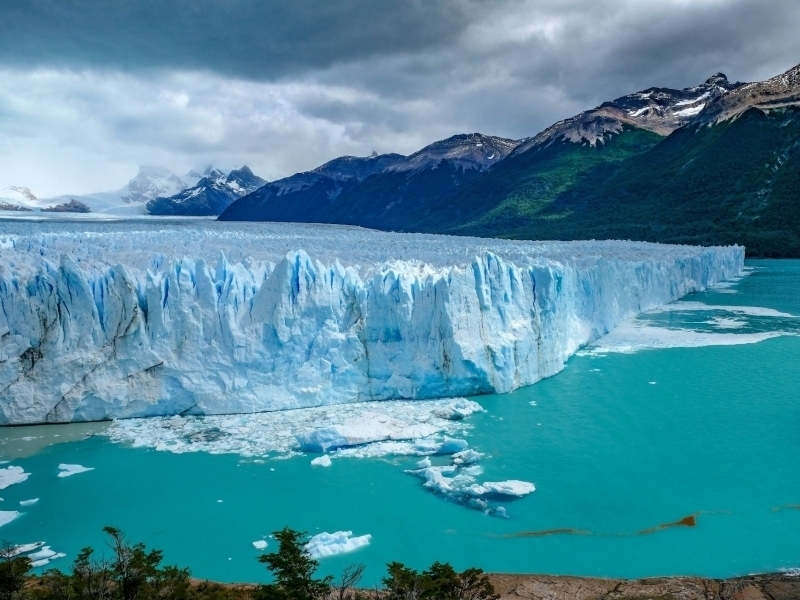News and Testimonials

THE COMPLETE GUIDE: HOW, WHY, AND WHEN TO VISIT ARGENTINA'S AWE-INSPIRING PATAGONIA
Visiting Patagonia is a life-changing experience, and its wilderness has much to offer adventurous travelers - starting with these.
If there's an alpine paradise on earth, it could just be Patagonia. Patagonia in its entirety is the whole southern part of South America governed by Chile and Argentina (mostly Argentina). This is a wonderland full of eye-watering lakes, fjords, glaciers, the southern end of the Andes Mountains.
The region is also home to deserts, steppes, and tablelands. The region has a varied heritage with influences from Indigenous groups, Germans, Croats, Italians, Mestizo, Criollo, and Welsh. It is rich in marine life including whales and penguins as well as many of South America's most famous animals in the mountains. If one is looking for solitude and truly a wild doors experience, this is the place to go.
About Patagonia
This can be regarded as South America's southern frontier and the landscapes here are incalculably beautiful and wild. The spaces are large and the population is sparse. The jagged peaks, lush forests, and pristine rivers inspire awe in tourists from around the world. Here one can find ancient petrified forests, Welsh settlements, massive glaciers, and teeming penguin colonies.
Size: Patagonia Covers Some 400,000 Sq Miles
Countries: Chile And Argentina
The main tourist locations in this vast wilderness are centered on Torres del Paine in Chile and the Los Glaciares National Park in Argentina. But whether one is in the national parks or not, the wilderness reigns throughout the region. While the Chilean Patagonia is characterized by fjords, inlets, many islands, and labyrinthine channels, the Argentinian Patagonia is dominated by ranching country, steppe, and empty vast tracts of land (and also mountains with glaciers).
Marine Wildlife
It's impossible to exaggerate just how diverse this massive region is. In Argentinian coastal Patagonia, one finds a sea teeming with marine life. Here is it perfect to go whale watching and see these magnificent marine mammals frolic and feed. There are the Southern Right Whales who calve in the winter, pods of orcas (aka Killer Whales), sea lions, elephant seals, fur seals, Magellanic penguins, rockhopper penguins, Commerson's dolphins, and the list goes on and on.
The Welsh Influence
Besides the whales, there's also the Welsh from Wales. In a few settlements like in Rawson, Puerto Madryn, Trelew, and Gaiman, one will find Welsh heritage from settlements of Welsh to Argentina in 1865. In these towns, there are Welsh-themed teashops and even people speaking Welsh.
National Parks
Tourism is concentrated in and around the Valdes Peninusla the Argentine Lake District, Perito Moreno Glacier, and Tierra del Fuego. Historically, this region has been a remote backpacking location, but today tourism is developing and there are more and more upmarket visitors.
Los Glaciares National Park
One of Argentina's main national parks in this region is the Los Glaciares National Park and has been listed as a World Heritage site since back in 1981. It is located in the far south of Argentina and boasts Magellanic subpolar forests, west Patagonian steppe biodiversity, and breath-taking glaciers.
The park earns its name from the giant ice cap in the Andes that feeds some 47 large grinding glaciers. While in most other parts of the world, glaciers start at an elevation of around 8,200 feet, here they start at only 4,900 - due to the sheer size of this ice cap. The glaciers then grind their way around 660 feet, down the mountain. The Los Glaciares National Park is adjacent to the Chilean Torres del Paine National Park which is one of Chile's crowning Patagonian jewels.
Perito Moreno National Park
Another of Argentina's popular national parks in this region is the Perito Moreno National Park also in the south on the border with Chile. The park is one of Argentina's oldest having been established back in 1937 and is situated at a high elevation. There are a series of mountain chains traversing the park in both directions - this makes it resemble an imposing amphitheater.
Source: https://www.thetravel.com/patagonia-when-is-best-to-go/










